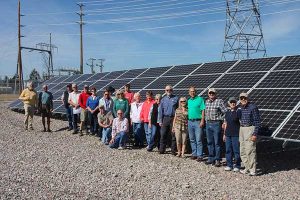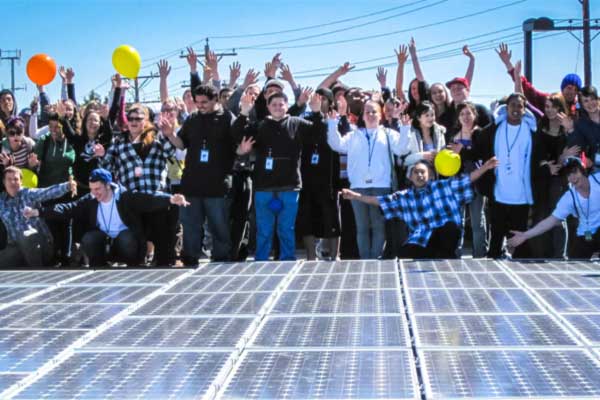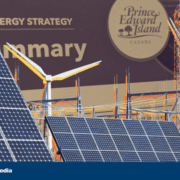Community solar is rapidly growing in North America. With ambitious green energy goals, both the US and Canada are interested in maximizing renewable energy uptake in residential communities.
However, with many people renting their homes, having insufficient funds to invest in a solar installation, or having poor roof conditions (due to shading or roof size), community solar offers a promising solution.
What is Community Solar?
Simply put, a community solar project is a central solar energy plant with electricity shared by more than a single property. Customers benefit from affordable renewable energy generated by solar panels at an off-site array.
You may have heard of community solar projects referred to as solar gardens, shared solar, or roofless solar.
Although the size of community solar projects can vary immensely, they are typically measured in megawatts and capable of supplying power to hundreds or even thousands of homes, businesses, nonprofits, and other buildings.
Community Solar projects make renewable energy more accessible
Shared solar provides renters, homeowners, nonprofits, businesses, and other groups equal access to solar energy’s economic and environmental benefits.
You don’t need an initial lump-sum investment to participate or a suitable rooftop. In fact, you don’t even have to be a property owner. It allows more people to go green and benefit from lower electricity costs.
When it comes to implementing community solar programs, there is no one-size-fits-all solution. Laws and regulations surrounding shared solar vary dramatically by location.

The first panel owners in front of the Flathead Electric SUN (solar utility network), Montana’s first community solar project, during the dedication ceremony in September 2015. Doris Schennum stands at the center, wearing a white shirt.
(Flathead Electric)
How does community solar work?
Community solar business models vary by location. Policies that enable community solar include legislation in place to support a third-party market.
There are many options when it comes to structuring community solar projects. In some cases, interested solar customers can buy or lease a portion of the solar panels in an array and then receive a credit on their bill from the electricity generated by their share of the system. This offsets their monthly electricity costs.
If subscribers move to a new home within the same utility service territory, they can typically continue to benefit from their community solar shares. Some business models also have options for selling and donating subscriptions.
In other community solar projects, it’s possible to buy renewable energy generated by the system as you would from other electricity providers without owning or leasing a portion of the solar array.
In addition to the more common off-site model for community solar, multi-family community solar projects make it possible for residents of apartments and condos to benefit from the energy produced by a rooftop array on their building.
How can developers and utilities benefit from Community Solar?
Developing shared solar arrays can help developers and utilities strengthen customer relationships while increasing community engagement. With more people interested in going green every day, utilities who participate stand a better chance at retaining customers.
Since most community solar projects are off-site, developers can strategically select a location that can produce the most power in an area that the utility has ensured will have the grid capacity to support it.
This way, community solar projects create a shared renewable energy market that benefits all parties involved, including subscribers, developers, and utilities.
Final thoughts
Community solar projects improve access to renewable energy for all.
In particular, shared solar helps low-income customers who are currently most impacted by a lack of access. Community solar has the potential to help countries meet their ambitious climate goals, all while building a stronger, better distributed, and more resilient electric grid.
—
This article was originally published on the PowerHub Blog. It’s published here via a partnership with the platform.














Comments